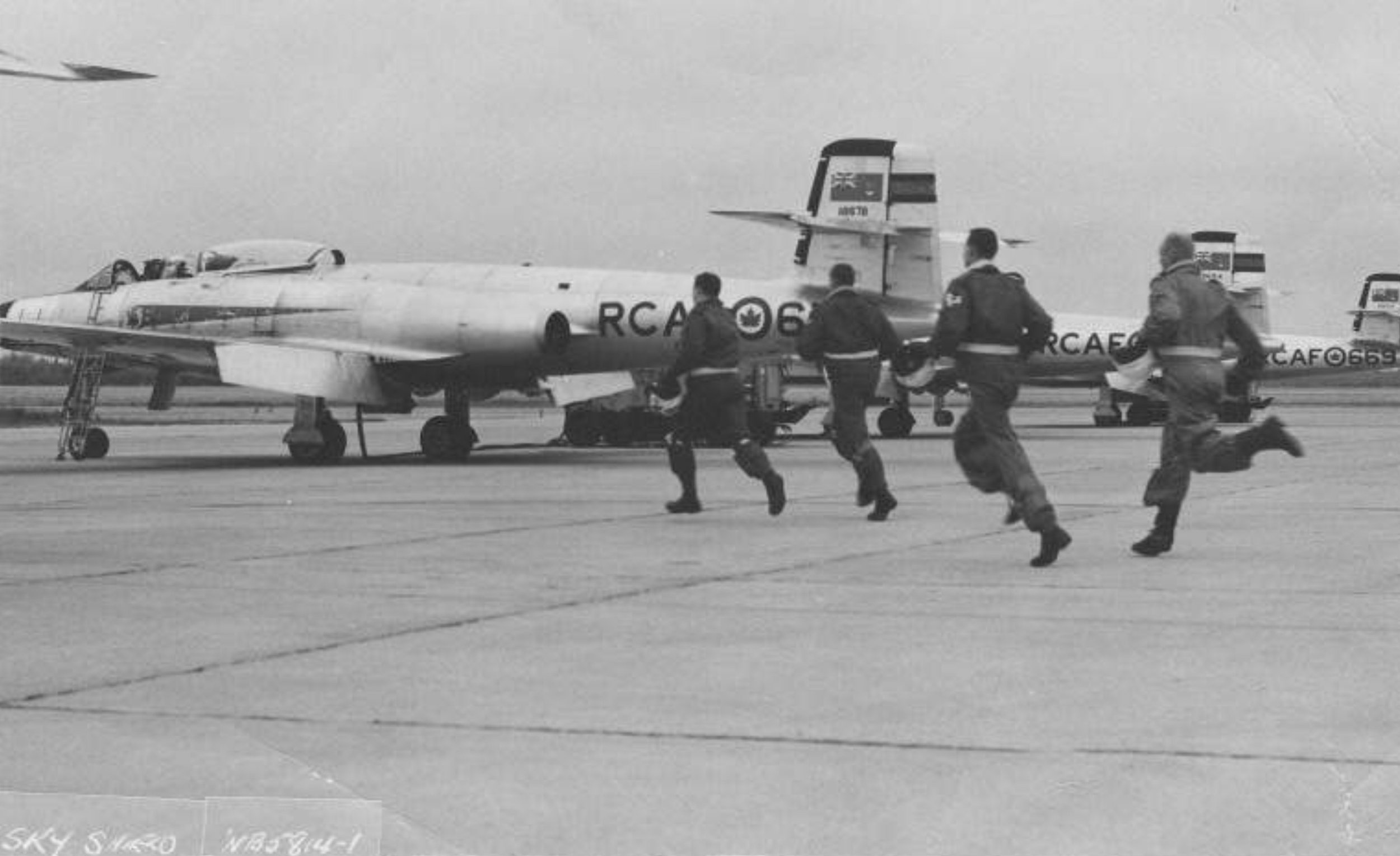The North Bay Airport & The Cold War
North Bay was home to 28 BOMARC surface-to-air missiles from 1961 to 1972. Stationed at a separate base 8 kilometers north of the City of North Bay, the BOMARCs were designed to destroy Soviet bombers attacking North America. Guided to their targets by Air Force personnel at North Bay’s main base, each missile had a 7 to 10 kiloton nuclear warhead. As a historical memorial from 1979 until 2009, an unarmed BOMARC missile was mounted on a pedestal in Lee Park by the North Bay Kiwanis Club. The removal of the missile was agreed upon between the City of North Bay and the U.S. Air Force in order to ensure the proper preservation and maintenance necessary to prevent corrosion.
On October 1, 1963, in addition to flying, the station became Canada’s North American Air Defence Command (NORAD) base. From a facility the size of Northgate Shopping Centre, 60 storeys underground, American and Canadian Air Force personnel monitored all flying in the Maritimes, east-central Canada and across the Canadian north. In the event of a Soviet nuclear attack, the base would be able to provide early warning to the United States and Canada. The NORAD centre also assisted pilots and air traffic control during airborne emergencies, intercepted smugglers’ aircraft for police, tracked hijacked aircraft, and conducted other similar activities for the safety and security of Canadian skies.
In 1983, North Bay’s NORAD responsibility was expanded to the whole of Canada’s skies. The centre moved into a new, state of the art facility above ground in 2006. In 2014, the base added space surveillance to its operations. Linked to Sapphire, Canada’s first military satellite, North Bay watches for and tracks objects 5,500 to 55,000 kilometers in space and passes its sightings to a space tracking centre in California. In its first year, North Bay saw 1.2 million space objects.
This photo shows a CF-100 scramble at RCAF Station North Bay during a NORAD exercise in 1961.
Doug Newman, 22 Wing Heritage Officer
Airmen at Canadian Forces Base North Bay scramble towards the CF-101 Voodoo interceptor circa 1968-1971.
From the sound of the alert, the crew had only 15 minutes to be in the air. Replacing the CF-100, the CF-101 Voodoo interceptor was supersonic and could be armed with nuclear weapons.
Since North Bay didn’t have any fighters from 1964-1972, this photo was captured when another base positioned their fighters in North Bay for military exercises. In 1993, the base was renamed 22 Wing.
Doug Newman, 22 Wing Heritage Officer
A pair of BOMARC missiles during an exercise.
The missile on the left is erect in the launch position. No BOMARC missiles were ever launched in Canada.
Department of National Defence
An aerial view of the BOMARC base and its 28 missile bays, called “coffins”.
The site is now privately owned and the missile bays are rented out as storage units.
Doug Newman, 22 Wing Heritage Officer
An unarmed BOMARC missile was mounted and displayed in Lee Park until 2009 when it was removed by the US Air Force. It is now on display at the National Air Force Museum in Ohio.
North Bay Museum Collection





